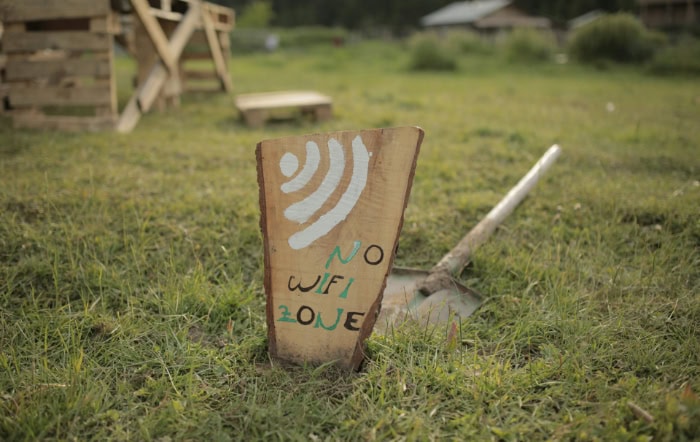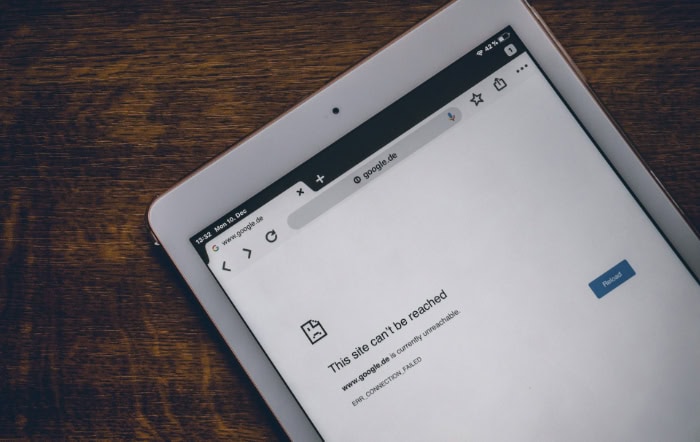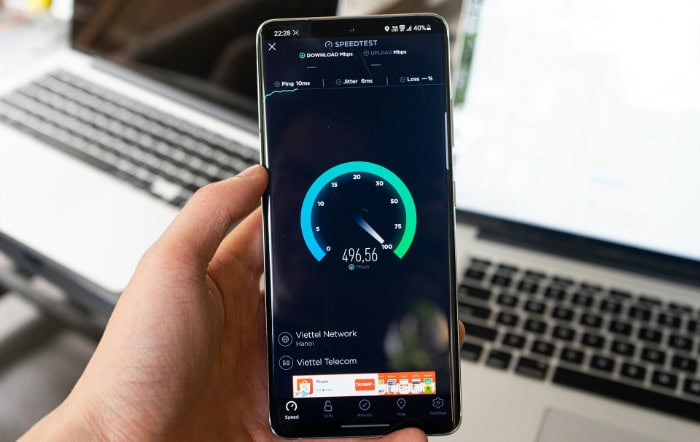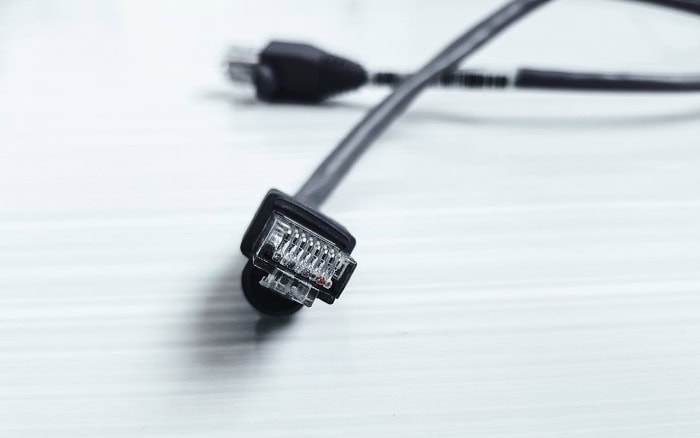Does Weather Impact Internet Speeds? What You Should Know

Have you ever found yourself frustrated by slow internet speeds during a thunderstorm or heavy snowfall? As our lives become more reliant on stable internet connections for work, education, and entertainment, it's crucial to understand how weather conditions can impact the quality and reliability of our internet service.
From lightning strikes causing power outages to heavy rain disrupting satellite signals, various meteorological phenomena can wreak havoc on our ability to stay connected.
Types of Weather That Affect Internet Speeds
While the internet has become an indispensable part of modern life, its performance can be significantly impacted by various weather conditions. From violent thunderstorms to extreme temperatures, the elements can wreak havoc on our ability to stay connected.
Thunderstorms and Lightning
Thunderstorms, accompanied by intense lightning strikes, pose a significant threat to internet connectivity. Lightning can cause power outages, which can shut down routers, modems, and other network equipment.
Additionally, lightning strikes can damage or destroy electrical components, leading to prolonged internet disruptions. Even if your home is not directly hit by lightning, nearby strikes can create electrical surges that travel through power lines and damage sensitive electronics, including your modem or router.
Heavy Rain and Flooding
Heavy rainfall and subsequent flooding can also wreak havoc on internet speeds. Water can seep into underground cables, causing signal attenuation and degrading the quality of your internet connection.
Flooding can also damage above-ground infrastructure, such as utility poles and junction boxes, leading to widespread outages. In extreme cases, flooding can even submerge entire network facilities, resulting in prolonged service disruptions for entire communities.
Snow and Ice
In colder climates, snow and ice can also take a toll on internet performance. Heavy snow accumulation can weigh down and snap overhead cables, while ice can cause them to sag and create signal interference.
Freezing temperatures can also damage outdoor network equipment, leading to slowdowns and outages. Additionally, snow and ice on satellite dishes can obstruct signals, making it difficult for satellite internet users to maintain a stable connection.
Extreme Heat
While often overlooked, extreme heat can also impact internet speeds. High temperatures can cause electronic components to overheat and malfunction, leading to slower performance or complete failures.
This is particularly problematic for outdoor equipment, such as satellite dishes and cellular towers, which are more exposed to the elements. Heat can also cause cables to expand, resulting in signal degradation and slower internet speeds.
In some cases, excessive heat can even lead to power outages, as overtaxed electrical grids struggle to keep up with the increased demand for cooling.
How Weather Impacts Different Internet Connection Types

Not all internet connections are created equal when it comes to weathering the storm. The type of internet service you have can play a significant role in determining how well your connection holds up under adverse weather conditions.
Cable Internet
Cable internet, which relies on coaxial cables to transmit data, is generally more resilient to weather-related disruptions than other connection types. However, it is not entirely immune to the effects of severe weather.
Heavy rain and flooding can damage underground cables, leading to signal degradation and slower speeds. Additionally, if the weather causes power outages, your cable modem will not function unless you have a backup power source.
Fiber-Optic Internet
Fiber-optic internet, which uses light signals transmitted through glass or plastic fibers, is often touted as the most reliable and weather-resistant internet connection type. Because the fibers are usually buried underground and are not susceptible to electromagnetic interference, they are less likely to be affected by lightning strikes or other electrical disturbances.
However, like cable internet, fiber-optic connections can still be disrupted by physical damage to the cables caused by severe flooding or construction accidents.
Satellite Internet
Satellite internet, which relies on signals transmitted from orbiting satellites to a dish mounted on your property, is particularly vulnerable to weather-related disruptions. Heavy rain, snow, and ice can all obstruct the satellite dish, weakening or even blocking the signal.
This can lead to slower speeds, increased latency, and frequent disconnections. Additionally, because satellite signals must travel a great distance through the atmosphere, they are more susceptible to interference from atmospheric conditions, such as heavy cloud cover or solar flares.
Wireless and Cellular Networks
Wireless internet connections, including Wi-Fi and cellular networks, can also be affected by weather conditions. Like satellite signals, wireless signals can be weakened or disrupted by heavy rain, snow, or fog, as these conditions can absorb or scatter radio waves.
This is especially true for higher frequency signals, such as those used by 5G networks, which have a shorter range and are more easily obstructed by obstacles. Extreme temperatures can also impact wireless network performance, as both the devices and the infrastructure they rely on can overheat or malfunction in extreme heat or cold.
Mechanisms of Weather Interference

Weather can impact internet speeds through a variety of mechanisms, each of which can contribute to slower performance, increased latency, or complete service disruptions.
Signal Attenuation and Distortion
One of the primary ways weather can impact internet speeds is through signal attenuation and distortion. Attenuation refers to the weakening of a signal as it travels through a medium, such as air, water, or cable insulation.
Weather conditions like heavy rain, snow, or fog can all contribute to signal attenuation, as the water droplets or ice crystals can absorb or scatter the electromagnetic waves that carry internet data. This can lead to slower speeds, increased latency, and more frequent disconnections.
Distortion, on the other hand, occurs when the shape or timing of a signal is altered as it travels through a medium. This can be caused by electromagnetic interference from lightning strikes or other electrical disturbances, which can introduce noise or errors into the signal.
Distortion can also be caused by physical factors, such as temperature fluctuations causing cables to expand or contract, which can change the signal's propagation speed and lead to timing errors.
Physical Damage to Infrastructure
Severe weather events can also cause physical damage to the infrastructure that supports internet connectivity. High winds can snap utility poles or blow debris into overhead cables, while heavy snow and ice accumulation can cause lines to sag or break under the added weight.
Flooding can damage underground cables, junction boxes, and network facilities, leading to widespread outages that can take days or even weeks to repair.
In addition to damage caused directly by weather, the aftermath of severe weather events can also impact internet infrastructure. For example, fallen trees or debris from damaged buildings can obstruct access to damaged equipment, making repairs more difficult and time-consuming.
In some cases, the damage may be so extensive that entire sections of the network need to be rebuilt from scratch.
Increased Network Congestion
Even if the physical infrastructure remains intact, severe weather can still impact internet speeds by increasing network congestion. During major weather events, more people tend to stay indoors and rely on the internet for entertainment, communication, and remote work.
This sudden surge in traffic can strain network capacity, leading to slower speeds and increased latency for all users.
Additionally, the aftermath of severe weather can also contribute to network congestion. For example, if widespread power outages force people to rely on mobile hotspots or public Wi-Fi networks, the increased demand can quickly overwhelm these backup systems, leading to further slowdowns and connectivity issues.
Power Outages and Equipment Failures
Finally, power outages and equipment failures caused by severe weather can also play a significant role in internet disruptions. Most internet infrastructure relies on a steady supply of electrical power to function, and even brief outages can cause routers, modems, and other network equipment to shut down or reset.
If the power remains out for an extended period, backup batteries and generators can eventually run out of power, leading to prolonged internet outages.
In addition to causing power outages directly, severe weather can also lead to equipment failures by creating power surges or fluctuations that can damage sensitive electronic components. This can happen when lightning strikes nearby power lines or when the electrical grid is struggling to cope with increased demand during extreme heat or cold.
These equipment failures can lead to localized internet outages that may take several days to repair, depending on the extent of the damage and the availability of replacement parts.
Geographical Factors in Weather-Related Internet Issues

The impact of weather on internet speeds can vary significantly depending on the geographical location and terrain of an area. Factors such as population density, proximity to large bodies of water, and elevation can all play a role in determining how vulnerable a region is to weather-related internet disruptions.
Urban vs. Rural Areas
The distinction between urban and rural areas can have a significant impact on how weather affects internet speeds. In general, urban areas tend to have more robust internet infrastructure, with a higher density of network nodes, redundant connections, and faster repair times in the event of an outage.
This is because there are more customers concentrated in a smaller area, making it more economically viable for internet service providers to invest in resilient infrastructure.
Rural areas, on the other hand, often face greater challenges when it comes to weather-related internet issues. The lower population density means that there are fewer customers to support the cost of infrastructure upgrades, leading to slower speeds and less redundancy in the network.
Additionally, the greater distances between homes and network nodes can make it more difficult and time-consuming to repair damage caused by severe weather events.
Coastal Regions vs. Inland Locations
Proximity to large bodies of water can also play a role in how weather impacts internet speeds. Coastal regions are more susceptible to certain types of severe weather, such as hurricanes, tropical storms, and storm surges, which can cause extensive damage to internet infrastructure.
The high winds and flooding associated with these events can damage overhead lines, flood underground cables, and knock out power to network facilities.
Inland locations, while not immune to severe weather, are generally less vulnerable to the specific types of events that can cause widespread internet outages in coastal regions. However, inland areas can still experience disruptions caused by heavy rain, snow, and ice, particularly if the infrastructure is not designed to withstand these conditions.
Mountainous Terrain vs. Flat Landscapes
The topology of a region can also influence how weather affects internet speeds. Mountainous areas can be particularly challenging, as the rugged terrain can make it more difficult and expensive to install and maintain internet infrastructure.
The steep slopes and rocky soil can make it harder to bury cables or install utility poles, while the higher elevations can expose equipment to more extreme temperatures and harsher weather conditions.
In contrast, flat landscapes generally pose fewer challenges when it comes to installing and maintaining internet infrastructure. The more gentle terrain makes it easier to bury cables and install utility poles, while the lack of significant elevation changes means that equipment is less exposed to extreme weather conditions.
However, flat areas can still be vulnerable to certain types of weather events, such as tornadoes or severe thunderstorms, which can cause extensive damage to above-ground infrastructure.
Mitigating Weather-Related Internet Problems

While it's impossible to completely eliminate the impact of weather on internet speeds, there are several strategies and technologies that can help mitigate the risks and minimize disruptions.
From protective measures for home networks to ISP strategies for weather resilience, there are steps that both individual users and service providers can take to ensure more reliable internet access during severe weather events.
Protective Measures for Home Networks
One of the most important things individual users can do to protect their home networks from weather-related disruptions is to ensure that their equipment is properly installed and maintained.
This includes using surge protectors to safeguard against electrical spikes caused by lightning strikes, as well as ensuring that outdoor equipment, such as satellite dishes or antennas, is securely mounted and properly grounded.
Another effective strategy is to invest in backup power sources, such as uninterruptible power supplies (UPS) or generators, which can keep your network equipment running during power outages.
It's also a good idea to regularly update your router's firmware and configure it to automatically reboot in the event of a connectivity issue, as this can help minimize downtime caused by weather-related disruptions.
ISP Strategies for Weather Resilience
Internet service providers also have a critical role to play in mitigating weather-related internet problems. One of the most effective strategies is to invest in redundant network infrastructure, such as backup power systems, multiple network paths, and geographically dispersed data centers.
This helps ensure that if one part of the network is damaged or disrupted by severe weather, there are alternative routes and resources available to maintain connectivity.
Another important strategy is to conduct regular maintenance and upgrades on network infrastructure, particularly in areas that are prone to severe weather events. This can include reinforcing utility poles, burying cables underground, and installing weather-resistant equipment that is designed to withstand extreme temperatures, high winds, and water damage.
Backup Connection Options
For individual users, having a backup internet connection can be a lifesaver during severe weather events. One option is to invest in a mobile hotspot or a cellular data plan that can provide internet access even if your primary connection is down.
While these options may not be as fast or reliable as a wired connection, they can still allow you to stay connected and access critical information during an emergency.
Another option is to identify public Wi-Fi hotspots or other locations in your area that offer free or low-cost internet access, such as libraries, community centers, or coffee shops. While these options may not be ideal for long-term use, they can provide a temporary solution if your home network is disrupted by severe weather.
Weather-Resistant Hardware and Technology
Finally, advances in weather-resistant hardware and technology are helping to make internet infrastructure more resilient to severe weather events. For example, some ISPs are using fiber-optic cables that are designed to withstand extreme temperatures and moisture, reducing the risk of signal attenuation and distortion caused by weather conditions.
Other technologies, such as mesh networks and satellite internet, are also becoming more weather-resistant. Mesh networks use multiple nodes to create a resilient, self-healing network that can automatically reroute traffic around damaged or disrupted nodes, while newer satellite internet systems are using advanced technologies like phased array antennas and low-earth orbit satellites to provide more reliable connectivity during severe weather events.
Conclusion
Throughout this exploration of the complex relationship between weather and internet speeds, we've seen how various meteorological phenomena can have a significant impact on our ability to stay connected.
From the different types of weather that can cause disruptions, such as thunderstorms, heavy rain, and extreme temperatures, to the ways in which different internet connection types are affected, it's clear that weather plays a crucial role in determining the speed and reliability of our internet service.
We've also examined the underlying mechanisms of weather interference, including signal attenuation and distortion, physical damage to infrastructure, increased network congestion, and power outages and equipment failures.
These factors, combined with geographical considerations like population density, proximity to large bodies of water, and terrain, create a complex web of variables that can influence internet performance during severe weather events.
As our reliance on the internet continues to grow, it's more important than ever to factor in weather considerations when choosing and using internet services. By staying informed, prepared, and proactive, we can all play a role in building a more weather-resilient digital future, ensuring that no matter what storms may come, we can stay connected to the people, information, and resources that matter most.


